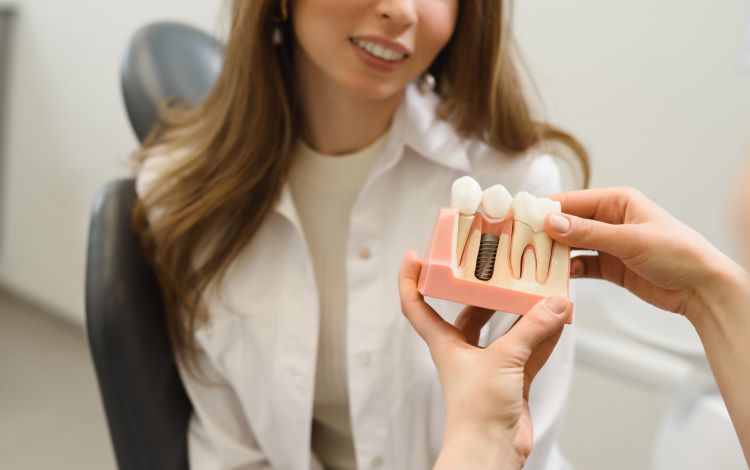Understanding Invisible Dentures and Their Use in Teeth Replacement
Invisible dentures are designed to blend with natural teeth while supporting everyday function. They are often discussed as an option for tooth replacement, offering a balance of appearance and practicality. Learning about their use helps clarify how they fit into dental care.

What Are Invisible Dentures and How Do They Work?
Invisible dentures, sometimes called clear dentures or implant-supported dentures, represent an advanced solution in denture treatment options. These prosthetic devices are designed to replace missing teeth while remaining virtually undetectable to others. Unlike conventional dentures, invisible dentures often use translucent materials that blend with the natural color of the gums, making them less noticeable.
The technology behind invisible dentures typically involves either precision attachment systems that eliminate visible metal clasps or implant-supported mechanisms that secure the dentures firmly in place without visible hardware. Some invisible dentures use flexible materials that conform more naturally to the oral cavity, enhancing both comfort and appearance. These modern dentures can be partial (replacing some teeth) or complete (replacing all teeth in an arch), depending on the patient’s needs.
How Much Do Invisible Dentures Cost Compared to Other Options?
The cost of invisible dentures varies significantly based on several factors, including the type of materials used, the complexity of the dental case, geographical location, and the experience of the dental professional. Generally, invisible dentures tend to be more expensive than traditional acrylic dentures due to the advanced materials and techniques required.
On average, patients can expect to pay between $1,500 and $4,000 per arch for high-quality invisible dentures. If dental implants are involved in anchoring the dentures, costs can increase to $15,000-$30,000 per arch. By comparison, traditional removable dentures typically range from $600-$1,500 per arch.
Insurance coverage for invisible dentures varies widely among providers. While basic dentures are often partially covered by dental insurance, the additional cost of invisible options might not be fully reimbursed, making it essential to verify coverage before proceeding with treatment.
| Denture Type | Average Cost Per Arch | Durability | Aesthetic Quality |
|---|---|---|---|
| Traditional Acrylic Dentures | $600-$1,500 | 5-7 years | Basic |
| Flexible Partial Dentures | $900-$2,500 | 5-8 years | Good |
| Premium Invisible Dentures | $1,500-$4,000 | 7-10 years | Excellent |
| Implant-Supported Dentures | $15,000-$30,000 | 10-15+ years | Excellent |
Prices, rates, or cost estimates mentioned in this article are based on the latest available information but may change over time. Independent research is advised before making financial decisions.
What Are the Benefits of Choosing Invisible Dental Aligners?
While invisible dentures replace missing teeth, invisible dental aligners serve a different purpose—straightening existing teeth. Many patients confuse these two distinct dental solutions. Invisible aligners, such as clear plastic trays, gradually shift teeth into proper alignment without the need for traditional metal braces.
The benefits of invisible aligners include:
-
Aesthetic appeal: Nearly invisible during wear, making them ideal for adults concerned about appearance during treatment
-
Removability: Can be taken out for eating, drinking, and cleaning
-
Comfort: No metal brackets or wires that might irritate the mouth
-
Convenience: Typically require fewer dental office visits than traditional braces
-
Hygiene advantages: Easier to maintain good oral hygiene compared to fixed orthodontic appliances
For patients with both teeth alignment issues and missing teeth, dentists may recommend a comprehensive treatment plan that includes both invisible aligners and dentures, addressing all aspects of their dental health.
How Do I Find Quality Invisible Dental Aligners in My Area?
Finding the right provider for invisible dental aligners or dentures requires careful research. The best approach is to seek dentists or prosthodontists with specific training and experience in these specialized treatments.
Start by asking your current dentist for recommendations or referrals to specialists who offer invisible denture options. Many dental practices now provide free consultations specifically for denture or aligner treatments. During these consultations, ask to see before-and-after photos of previous patients and inquire about the dentist’s experience with invisible denture technologies.
Online resources can also help locate qualified providers. Professional dental associations like the American College of Prosthodontists or the American Academy of Cosmetic Dentistry maintain directories of specialized dentists. Patient review platforms offer insights into others’ experiences with local providers, though these should be considered alongside professional credentials.
When evaluating potential providers, consider:
-
Their specialized training in prosthodontics or cosmetic dentistry
-
Years of experience specifically with invisible dentures or aligners
-
Before/after portfolio of similar cases
-
Technology and materials used
-
Payment options and insurance acceptance
How to Choose Between Traditional Dentures and Invisible Options
Deciding between traditional dentures and invisible alternatives requires weighing several factors. Traditional dentures have been used successfully for decades and are typically more affordable. However, they may appear less natural and can sometimes cause discomfort or slippage.
Invisible dentures offer superior aesthetics and often better functionality but come at a higher price point. When making this decision, consider:
-
Budget constraints and insurance coverage
-
Aesthetic priorities and social considerations
-
Oral health status and bone structure
-
Long-term durability expectations
-
Lifestyle factors (speaking engagements, social activities)
-
Maintenance requirements and time commitment
Many dentists recommend starting with a comprehensive dental evaluation to determine candidacy for different denture options. Some patients may benefit from starting with traditional dentures and upgrading later, while others might find the additional investment in invisible options worthwhile from the beginning.
Dental professionals increasingly encourage patients to view dentures as an investment in quality of life rather than focusing solely on upfront costs. The improved confidence, comfort, and functionality that often come with higher-quality invisible dentures can provide value that extends far beyond the price difference.
This article is for informational purposes only and should not be considered medical advice. Please consult a qualified healthcare professional for personalized guidance and treatment.




